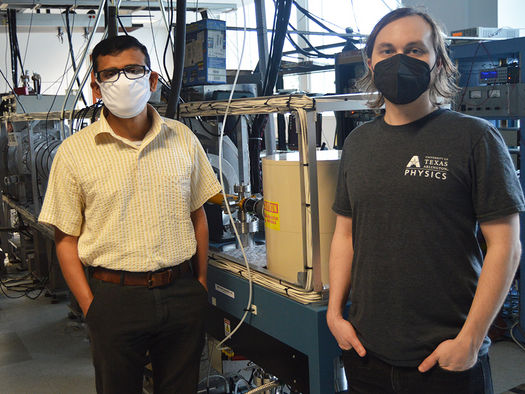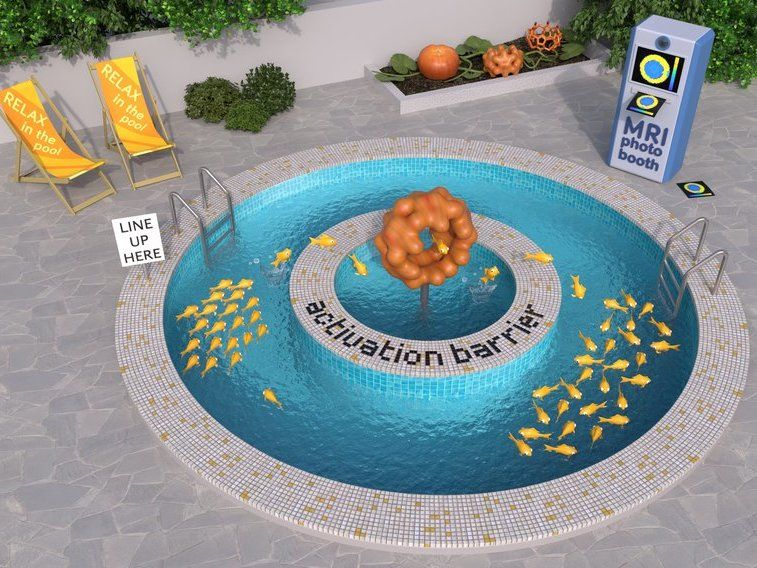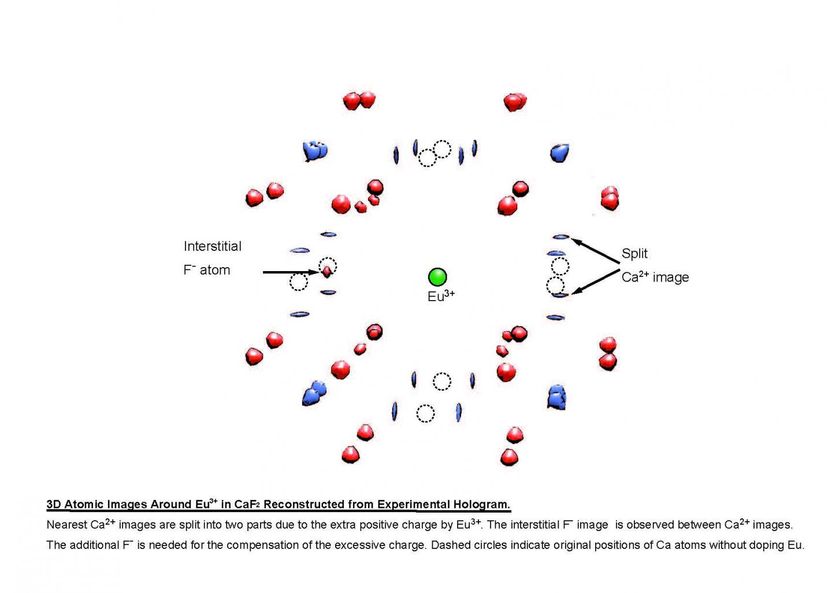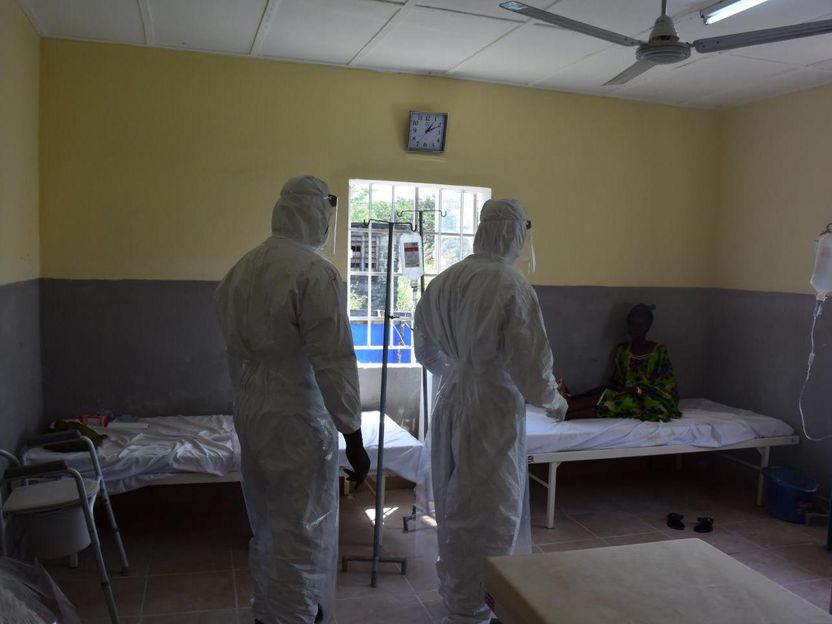Advances in spectroscopy
New way to measure properties of a material’s surface layer
Physicists at The University of Texas at Arlington have developed a new technique that can measure the properties of the topmost atomic layer of materials without including information from the underlying layers.

Varghese Chirayath, left, and Alex Fairchild
UT Arlington
Researchers from the Positron Lab in the UTA Department of Physics utilized a process called auger-mediated positron sticking (AMPS) to develop a novel spectroscopic tool to measure the electronic structure of the surface of materials selectively.
A new article published in the journal Physical Review Letters (PRL), details the new technique. In addition, the online magazine Physics published a Viewpoint article on the publication, titled “Spectroscopy That Doesn’t Scratch the Surface,” which explains why the paper is important to the field.
Alex Fairchild, postdoctoral scholar in the Positron Lab, is the study's lead author. Co-authors include Varghese Chirayath, assistant professor of research; Randall Gladen, postdoctoral researcher; Ali Koymen, professor of physics; and Alex Weiss, professor and chair of the UTA Department of Physics. Bernardo Barbiellini, professor of physics at LUT University in Finland, also contributed to the project.
The AMPS process, in which positrons (antimatter of electrons) stick directly to surfaces followed by electron emission, was first observed and described by Saurabh Mukherjee, a graduate student, along with Weiss and other colleagues, in 2010 at UTA. Those results were published in a paper in PRL.
"Alex (Fairchild) and Varghese figured out how to use this phenomenon that we discovered in 2010 to measure the top layer and get information about the electronic structure and the behavior of the electrons in the top layer," Weiss said. "That will determine a material's many properties, including conductivity, and can have important implications for building devices."
Fairchild said the AMPS process is unique because it uses virtual photons to measure the topmost atomic layer.
"This is different from typical techniques like photoemission spectroscopy, where a photon penetrates multiple layers into the bulk of a material and therefore contains the combined information of the surface and subsurface layers,” Fairchild said.
"Our AMPS results showed how virtual photons emitted following positron-sticking interact preferably with electrons that extend further into the vacuum than with electrons that were more localized to the atomic site," Chirayath said. "Our results are thus essential to understand how positrons interact with surface electrons and are extremely important to understand other similarly surface-selective, positron-based techniques."
Weiss noted that the UTA Positron Lab is currently the only place this technique could have been developed, due to the capabilities of its positron beam.
"At present, UTA probably has the only lab in the world that has a positron beam that can get down to the low energies needed to observe this phenomenon," Weiss said.
Original publication
Alexander J. Fairchild et al.; Photoemission Spectroscopy Using Virtual Photons Emitted by Positron Sticking: A Complementary Probe for Top-Layer Surface Electronic Structures; Physical Review Letters; 2022.
Atsuo Kawasuso; Spectroscopy That Doesn’t Scratch the Surface; August 29, 2022; Physics 15, 129.
Other news from the department science
Most read news
More news from our other portals
See the theme worlds for related content
Topic World Spectroscopy
Investigation with spectroscopy gives us unique insights into the composition and structure of materials. From UV-Vis spectroscopy to infrared and Raman spectroscopy to fluorescence and atomic absorption spectroscopy, spectroscopy offers us a wide range of analytical techniques to precisely characterize substances. Immerse yourself in the fascinating world of spectroscopy!

Topic World Spectroscopy
Investigation with spectroscopy gives us unique insights into the composition and structure of materials. From UV-Vis spectroscopy to infrared and Raman spectroscopy to fluorescence and atomic absorption spectroscopy, spectroscopy offers us a wide range of analytical techniques to precisely characterize substances. Immerse yourself in the fascinating world of spectroscopy!
























































